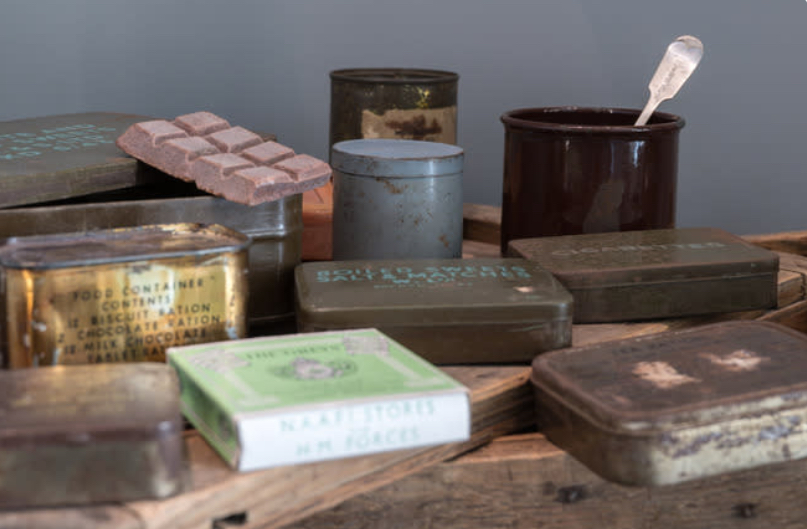Chocolate has long been considered a symbol of comfort, indulgence, and joy. Its sweet taste and melt-in-your-mouth texture make it universally loved. But during wartime, chocolate served a different purpose—one that had little to do with pleasure. Military chocolate, designed specifically for soldiers, was deliberately made to taste bad. This decision, while seemingly counterintuitive, was the result of careful thought and practicality. To understand why military chocolate was made intentionally unpalatable, we need to delve into its history, purpose, and how it reflected the unique challenges faced by armies during war.
The Origin of Military Chocolate
Chocolate made its way into military rations as early as the 19th century, but its formal integration into modern armies occurred during World War I and II. Recognizing chocolate’s high-calorie density and relatively long shelf life, military strategists saw it as an ideal source of energy for soldiers in the field.
The U.S. Army, in particular, played a pivotal role in developing specialized chocolate rations. In 1937, the Hershey Company was tasked by the U.S. Army Quartermaster Corps to create a chocolate bar for soldiers. This bar, later known as the “D Ration,” was designed to meet specific criteria:
Nutritional Value: Each bar had to provide 600 calories to serve as a quick energy boost.
Portability: The bar needed to be small and durable, withstanding extreme temperatures and rough handling.
Taste: Crucially, the bar had to taste “just good enough” to be eaten in emergencies but unpleasant enough to discourage soldiers from eating it recreationally.
Why Taste Was Sacrificed
The deliberate decision to make military chocolate taste bad was driven by practical concerns:
Preventing Overconsumption
Soldiers often faced long periods without proper meals, and military rations were carefully calculated to ensure they lasted as long as possible. A sweet, delicious chocolate bar would be irresistible, leading soldiers to eat them too quickly and deplete their rations prematurely. By making the chocolate barely palatable, the Army ensured it was consumed only when absolutely necessary.
Emergency Use
Military chocolate was not meant to replace regular meals. Instead, it was an emergency ration designed for survival situations. Soldiers needed to associate the chocolate with necessity rather than indulgence, reinforcing its role as a last-resort food.
Durability and Composition
Creating a delicious chocolate bar that could endure the harsh conditions of war was a technical challenge. Regular chocolate melts at relatively low temperatures, becomes brittle in the cold, and can spoil over time. To address this, military chocolate was made with a higher proportion of cocoa butter and less sugar, resulting in a dense, bitter product that was resistant to extreme conditions.
The D Ration: A Case Study in Unpalatable Chocolate
The D Ration bar was one of the most infamous examples of bad-tasting military chocolate. It was made with a mix of:
•Cocoa powder
•Sugar
•Milk powder
•Oats
•A small amount of vanilla
This mixture was pressed into a hard, dense bar that could not be bitten into easily. Soldiers often joked that it was easier to break it with a bayonet than with their teeth.
Taste Testimony
The taste was described as bitter, grainy, and slightly sour. One soldier famously quipped, “It tastes like a combination of a chocolate bar and a brick.” Despite these complaints, the bar fulfilled its purpose—providing essential calories and being unappealing enough to last until an emergency.
The Tropical Chocolate Bar and the Heat Problem
During World War II, the U.S. military faced a unique challenge in tropical climates like the South Pacific, where regular chocolate melted too quickly. This led to the development of the “Tropical Chocolate Bar,” another Hershey innovation.
Challenges in Taste and Texture
To make the Tropical Chocolate Bar melt-resistant, Hershey altered its formula, using less sugar and more starch and fat. The result was a bar that could withstand temperatures up to 120°F but tasted even worse than the D Ration.
Mixed Reception
While the Tropical Bar succeeded in being heat-resistant, it became notorious among soldiers for its unpleasant taste. Some troops reportedly traded their chocolate bars with locals or simply discarded them altogether.
The Psychological Impression of Bad-Tasting Chocolate
The decision to make military chocolate unpalatable had psychological ramifications for soldiers. Food is more than sustenance; it provides emotional comfort, especially in the high-stress environment of war. The bitterness and hardness of military chocolate stood in stark contrast to the comforting, sweet chocolate soldiers remembered from home.
Motivational Boost
Ironically, some argue that the bad taste served as a reminder of what soldiers were fighting for—the comforts of civilian life. However, it also led to resentment in some cases, with soldiers feeling that the unappealing rations reflected a lack of care from military leadership.
The Evolution of Military Chocolate
As military technology and logistics improved, so did the approach to feeding soldiers. Post-World War II, advancements in food science allowed for more palatable and versatile chocolate rations.
Modern Military Rations
Today, military chocolate has evolved into energy bars and snacks that are both durable and tasty. Companies like Clif Bar and GU Energy produce rations for modern armies that provide the same calorie density as the old D Ration but are far more enjoyable to eat.
Nostalgia and Curiosity
Despite its unpopularity during the war, military chocolate has become a curiosity among history enthusiasts and collectors. Original D Ration bars are prized artifacts, and some companies even produce replicas for those who want to experience the taste of history.
Lessons from Military Chocolate
The story of military chocolate is a fascinating case study in how necessity shapes innovation. Its bitter taste and hard texture reflect the harsh realities of war, where survival trumps comfort. At the same time, it highlights the ingenuity of food scientists who adapted one of the world’s most beloved treats for the battlefield.
As we reflect on the sacrifices of those who served in wartime, even something as simple as bad-tasting chocolate becomes a symbol of resilience and resourcefulness. It reminds us that even in the darkest times, small comforts can serve a larger purpose—fueling the fight for a better future.
Impression
Military chocolate was never meant to be a treat. Its unpalatable taste was a deliberate design choice, ensuring it served its purpose as an emergency ration rather than a source of indulgence. While it may not have brought joy to soldiers, it provided them with essential calories in moments of need, contributing to their endurance and survival.
Today, we can look back on the story of military chocolate with a mix of awe and amusement, appreciating how this humble bar of bitterness played a vital role in wartime history.
No comments yet.







